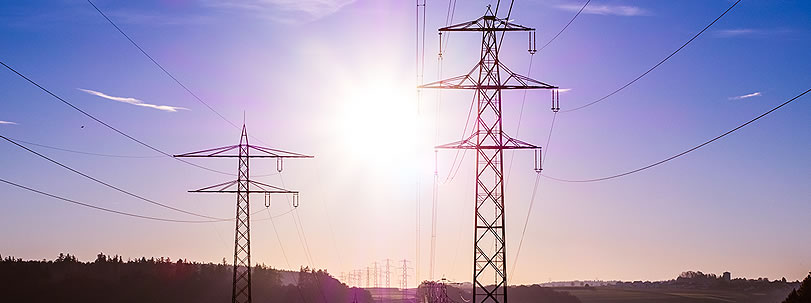Power play: Align demand, cost of electricity in Kenya

Having followed with great interest the ongoing debate on the power sector, fuelled by the thought-provoking articles written by Edward Njoroge and Jaindi Kisero recently, we would like to join the fray with some points to ponder.
One thing that all sides agree on is that power in Kenya is expensive. There is far less consensus on where to attribute responsibility for this unhappy outcome as on the one hand, the pricing terms were negotiated and agreed by Kenya Power but on the other hand, the negotiations may have been coloured by the expectation of significant increases in demand for electrical energy by the time the power plants were commissioned. The forecasted demand remains unrealised and has been served a further blow by the COVID-19 pandemic.
The Taskforce gazetted to review the existing Power Purchase Agreements (PPAs) has its work cut out for it, seeing as it has been tasked to strike a near-impossible balance between reducing the cost of power for Kenya Power while ensuring that power producers are able to service their debt and make a return on their investment based on the financial models earlier developed and agreed with Kenya Power. The issue is compounded by the need to demonstrate to investors that they can rely on contractual certainty and enforceability of agreements when contemplating entry into the public-private partnership space or other long-term arrangements with state entities.
We agree with the point made in the rebuttals and rejoinders penned by Jaindi Kisero and Edward Njoroge that it is critical to develop a holistic solution to the problems facing Kenya Power. In addition to constituting the PPA Taskforce, we consider that there are other approaches to think about. Firstly, the government should consider compelling all ministries, county governments, public sector entities and state corporations to settle all outstanding Kenya Power bills within a reasonable period - say 60 days. This may help from a cashflow perspective even as other steps are taken to generate new revenue by creating demand for power.
Demand can be an elusive concept – there are economic theories premised on the fact that supply generates demand and there are other schools of thought which hold the opposite view that demand precedes supply in this particular chicken-and-egg debate. The analysis of demand is further complicated by the apparent correlation that demand has with economic growth and infrastructural development, which may imply an element of causality. There are studies showing that the yearly power consumption of an individual in sub-Saharan Africa is equivalent to that consumed in 25 days by an individual in the OECD market which is far more developed. Also, it is not uncommon for cities in developed countries to consume much more power than entire countries in emerging markets. Following this train of thought then, developing our transportation, commercial, industrial and residential infrastructure will definitely result in a higher demand for power. This means that dialogue on the topic of power cannot be looked at in isolation without the broader context of other economic pillars and market forces.
Enhanced investment in tech and media hubs, mining, tourism and recreational zones and most of all, manufacturing, will have a similar boosting effect on power consumption. Manufacturing has been hailed as a key driver of economic growth and job creation and specific initiatives under the umbrella of the Government’s Big4 agenda are directed towards creating a conducive environment to spur manufacturing. However, the cost of power is itself a disincentive for manufacturers as it means that their products struggle to compete with products manufactured in countries with a lower cost of power like Egypt. It is therefore crucial for Kenyan manufacturers to access cheaper power, including through self-generation under the net metering provisions of the Energy Act 2019.
Modes of transport may also play a key role in generating demand for power. In line with the global green agenda, electric motor vehicle sales are expected to significantly overtake models powered by hydrocarbon fuels in coming years. We note that the importation of electric powered motor vehicles enjoys a preferential Excise duty rate in Kenya and if this tax incentive does the trick, then we should experience a spike in demand for power as a greater number of electric vehicles claim space on our roads. A shift to using trains powered by electricity would likewise increase our national energy consumption levels. Tax incentives are but one device available to the Government to shift consumption patterns so as to catalyse demand for power.
Kenya has been classified as a lower-middle income country by the IMF which tells us that there is a segment of the population with enough disposable income to acquire and run various electrical appliances and gadgets in their homes. Ironically though, although the number of electrical appliances used in households may increase, the overall power consumed may not be as high as expected, due to new environmentally friendly technology which has resulted in more energy efficient appliances.
It is difficult to reconcile ourselves to the notion that Kenya has an oversupply of power when we vividly recall the data coming out of programs such as the US-led Power Africa initiative which told us that two-thirds of Africans lacked access to electricity. While we appreciate the progress made in delivering electricity to underserved communities in recent years, we note that accessibility is a function not just of availability but also of affordability.
Affordability of power remains a challenge, even at the household level and the stark contrast between the penetration of electrification in the urban areas compared to that in rural areas is a testament to the cost issue. The patchy distribution of electrical power in rural areas helps to reconcile the contradiction between the perceived over-supply of power at the national level with the under-connectivity to the grid suffered by those in remote areas. This mismatch calls for the use of wheeling which is provided for in the Energy Act 2019, to expand the distribution network, as well as the use of mini or micro grid solutions. We see that the use of off-grid solar power using small-scale solar plants from the Nordics has resulted in the electrification of many villages in Cameroon – and the cost per household of that power is equivalent to the cost of 1-2 bottles of beer a day. While such solutions have been implemented by private power companies, there is no reason why Kenya Power cannot participate in providing localised solutions for remote areas.
Admittedly, the PPA Taskforce and other stakeholders of the power sector have to weigh many competing considerations in arriving at a workable and timely remedy. As for the private investors who may feel beset by woes in connection with their PPAs, we note that there is one potential piece of good news - a proposal in the Finance Bill 2021 to reinstate the VAT exemption for specialised equipment for the development and generation of solar and wind energy, which was done away with last year. Although such tax incentives are welcome, a more comprehensive strategy is required to address the myriad and complex challenges facing the power sector.
The article was published in the Business Daily on 8 June 2021.



